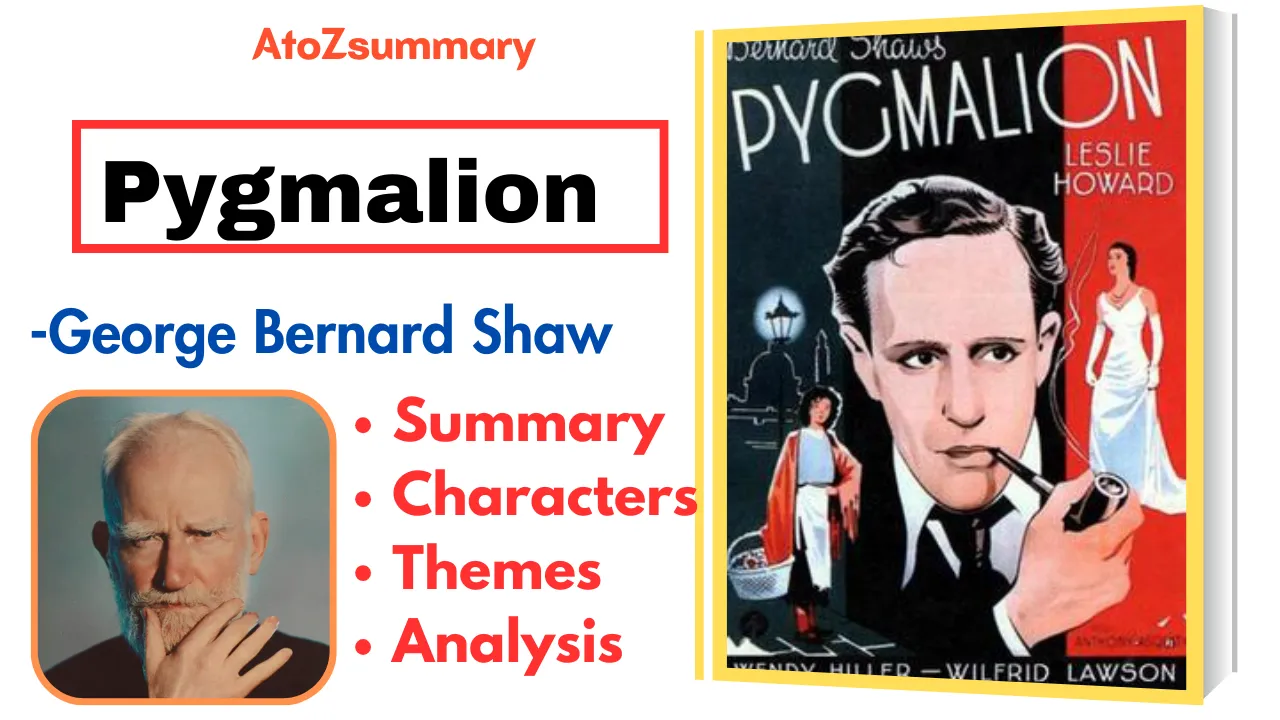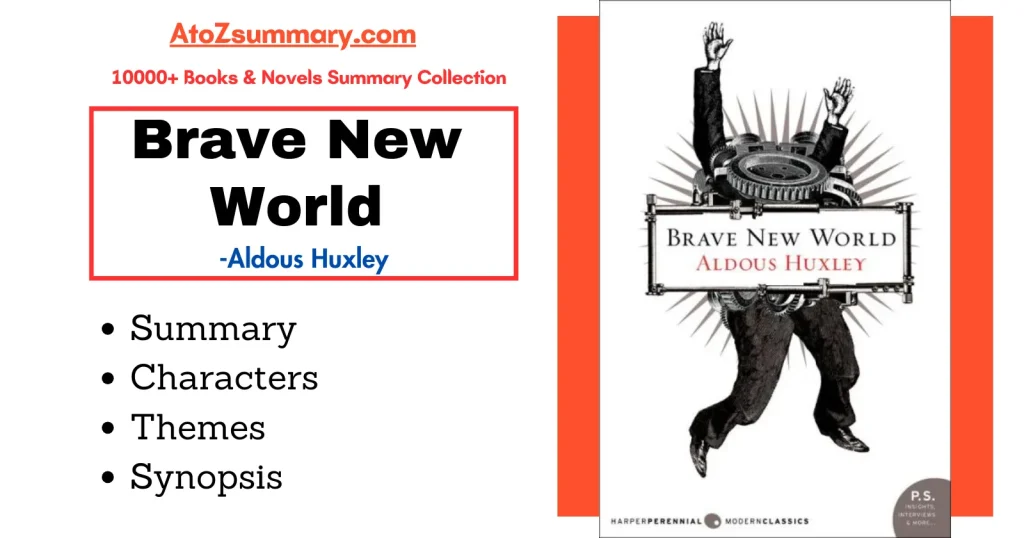About the Play: Pygmalion
| Title | Pygmalion |
|---|---|
| Author | George Bernard Shaw |
| Genre | Comedy, Social Satire |
| Premiere | April 13, 1913 |
| Setting | London, England, early 20th century |
| Symbolism | Flowers, clothes, accents |
| Major Conflicts | Eliza’s transformation from a flower girl into a lady, Eliza’s struggle to find her own identity, Higgins’s conflict between his passion for phonetics and his insensitivity to others |
| Famous Lines | “The moment I let you sit down and talk to me as if we were equals, you presume to give yourself airs.” |
| Key Events | Eliza’s first meeting with Higgins, Eliza’s transformation into a lady, Eliza’s confrontation with Higgins at the Embassy Ball |
| Critical Reception | Initially controversial, but now considered a classic of British theater |
| Legacy | Continues to be performed and adapted today, with notable adaptations including the musical My Fair Lady and the 1964 film of the same name |
Analysis: Pygmalion
“Pygmalion” by George Bernard Shaw is a play that explores the themes of social class, identity, and the power of language. The story revolves around a professor of phonetics, Henry Higgins, who makes a bet that he can transform Eliza Doolittle, a poor flower girl with a strong Cockney accent, into a refined lady by teaching her proper speech and manners.
As Eliza undergoes this transformation, the play raises questions about the impact of education on social mobility and the authenticity of one’s identity. It’s a witty and thought-provoking commentary on the rigid class structures of society and the role of language in shaping perceptions.
Characters: Pygmalion
The characters of “Pygmalion” by George Bernard Shaw are:
- Henry Higgins: A clever professor who teaches phonetics and takes on the challenge of transforming Eliza Doolittle’s accent and manners.
- Eliza Doolittle: A poor flower girl with a strong Cockney accent. She becomes the subject of Professor Higgins’ experiment and undergoes a transformation into a refined lady.
- Colonel Pickering: A kind and wealthy man who is interested in phonetics. He becomes friends with Professor Higgins and supports the project of transforming Eliza.
- Alfred Doolittle: Eliza’s father, a dustman. He is a humorous character who becomes involved in the story due to his relationship with Higgins.
- Mrs. Pearce: Professor Higgins’ housekeeper. She is practical and skeptical about Higgins’ experiment with Eliza.
- Freddy Eynsford-Hill: A young man who becomes infatuated with Eliza as she undergoes her transformation.
- Mrs. Higgins: Professor Higgins’ mother. She is refined and disapproves of her son’s manners and behavior.
- Mrs. Eynsford-Hill: Freddy’s mother, who represents the upper class. She encounters Eliza in various social situations.
Themes: Pygmalion
The themes of “Pygmalion” by George Bernard Shaw are:
- Social Class and Identity: The play explores how social class shapes a person’s identity and how one can be transformed or constrained by societal expectations.
- Language and Communication: Shaw highlights the power dynamics associated with language and the impact of speech on perception and social standing.
- Transformation and Self-Improvement: The story revolves around the transformation of the character Eliza Doolittle, showcasing the possibilities of self-improvement and personal growth.
- Gender Roles: The play challenges traditional gender roles and expectations, particularly in relation to the character of Eliza and her struggle for independence.
- Education and Society: Shaw critiques the education system and its role in reinforcing social hierarchies, as seen through the experiment of turning a common flower girl into a refined lady.
- Human Dignity: The play raises questions about human dignity and the right to be treated with respect, regardless of one’s social background.
Watch Full Play Summary of “Pygmalion”
Summary
The play starts with a variety of individuals shelter from the rain on St. Paul’s Church portico. At first, recognized just by their evocative titles, the individuals belong to several social strata. Later on, it becomes clear that these individuals include Eliza Doolittle, Colonel Pickering, Professor Henry Higgins, and the Eynsford Hill family. Eliza yells at Freddy Eynsford Hill in her Cockney accent after they cross paths. Then she tries to sell her flowers to Pickering. Because of his frequent note-taking, the audience becomes concerned that Higgins is a police informant, and they take action to save Eliza from being taken into custody. In an attempt to diffuse the tension, Higgins uses his language abilities. When Higgins and Pickering learn that they have a similar interest in phonetics, Higgins boasts that he could pass for a duchess even lower than Eliza the flower girl. The throng disperses when the rain stops.
Eliza visits Higgins’s laboratory on Wimpole Street first thing the next morning. In an attempt to secure employment at a flower store, she asks him to teach her how to talk in a ladylike manner. Even though he makes fun of her at first, Higgins ultimately views the offer as a chance to highlight his abilities. Pickering reassures him that if Higgins can successfully pass Eliza off as a duchess, Pickering will pay for the trial. When Higgins nods, Eliza is brought to be cleaned and dressed by his maid, Mrs. Pearce.
Alfred Doolittle, Eliza’s father who has been away, shows in and asks that his daughter return. When Higgins decides to send her back, Doolittle is forced to admit that his true goal is to obtain money from Higgins. Higgins finds Doolittle’s unconventional speech funny and offers to give him more money. Doolittle says no, explaining that the additional funds will come with obligations. The men don’t recognize Eliza when she comes back into the room looking clean and wearing a kimono.
In the ensuing months, Higgins instructs Eliza in proper English speech. Higgins sends her to his mother’s residence to gauge her development. Eliza also meets the Eynsford Hill family as it’s Mrs. Higgins’s day for social visits. Freddy, the son, is drawn to her right away. Higgins asks his mother what she thinks after the visit. She claims that although Eliza seems and sounds more like a duchess, her manners and speech pattern are still implausible. In addition, Mrs. Higgins is concerned about what will occur when the experiment is completed. Eliza’s second test starts when the ambassador’s ball comes around a few months later. She is so convincing that even Nepommuck, a linguist, falls for it.
After the party, Higgins and Pickering are tired of the project and want to get back home. They don’t say anything kind or thank Eliza at all. Eliza is hurting emotionally. She hurls Higgins’ slippers at him in a fit of wrath. She has no idea what the future holds for her. Higgins advises she get married in response. Outraged, Eliza gives back the borrowed jewels. She gathers her belongings and departs. She goes outside and meets Freddy, and the two start dating.
In a hurry, Higgins and Pickering head to Mrs. Higgins’s residence early the next morning. Higgins is stunned that Eliza fled despite their altercation the night before and is frantically looking for her. Alfred Doolittle shows up in the middle of their terror, looking elegant in his bridal gown. Due to a recently departed donor who took Higgins’s jest about Doolittle’s initial morals literally, Doolittle is now unhappily wealthy. Acknowledging Pickering for treating her like a lady, Eliza walks in. Then, threatening to work for his opponent to maintain herself, she makes a threat to Higgins. To attend Doolittle’s wedding, Pickering, Eliza, Mrs. Higgins, and Doolittle depart. Higgins yells “errands” at Eliza as they leave since he knows she’ll come back to live with him. The drama concludes without revealing Eliza’s actions.
The ending of the play sees Eliza Doolittle transformed from a poor flower girl with a strong Cockney accent into a refined lady with proper manners and speech. Professor Henry Higgins, who undertakes the task of transforming her, succeeds in making her appear as a lady suitable for high society.
However, the ending is open to interpretation. While some adaptations and productions suggest a romantic connection between Eliza and Higgins, Shaw’s original intent was more ambiguous. Eliza’s departure from Higgins’s home suggests her independence and a desire to find her own path rather than being tied to him. The play raises questions about social class, identity, and the impact of language on a person’s status in society.
FAQs
What is the story of Pygmalion about?
What does Pygmalion mean?
In the play “Pygmalion,” Professor Higgins takes on the challenge of transforming a flower girl into a refined lady.
What is the main idea of Pygmalion?
The main idea of “Pygmalion” is about a poor girl named Eliza who learns to talk posh and tries to fit in with fancy people.
What is the Pygmalion’s myth?
Pygmalion’s myth tells the story of a sculptor who falls in love with his own creation, a beautiful ivory statue.
Why was Eliza sad in Pygmalion?
Eliza was sad in Pygmalion because she realized that Professor Higgins only saw her as an experiment, not as a person.
Why did Eliza throw Higgins slippers at him?
Eliza threw Higgins’ slippers at him as an act of rebellion against his demeaning treatment and to assert her own independence.
Who does Eliza marry in Pygmalion?
In the original play, Eliza marries Freddy Eynsford-Hill, but in some film adaptations, she returns to Professor Higgins.
What is the name of the goddess that helps Pygmalion achieve his wish?
The goddess Aphrodite, the Greek goddess of love, beauty, and pleasure, helps Pygmalion achieve his wish.
What is the climax of Pygmalion?
In Pygmalion, the climax occurs when Eliza, having successfully transformed into a refined lady, confronts Higgins for his insensitive treatment, asserting her independence and challenging his perception of her.





![The Catcher In The Rye Summary, Themes & Characters [by J. D. Salinger] The Catcher In The Rye Summary, Themes & Characters [by J. D. Salinger]](https://atozsummary.com/wp-content/uploads/2023/06/The-Catcher-In-The-Rye-Summary-Themes-Characters-by-J.-D.-Salinger.webp)





